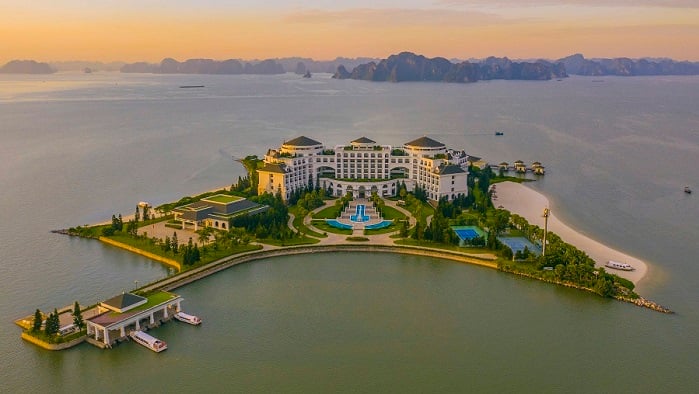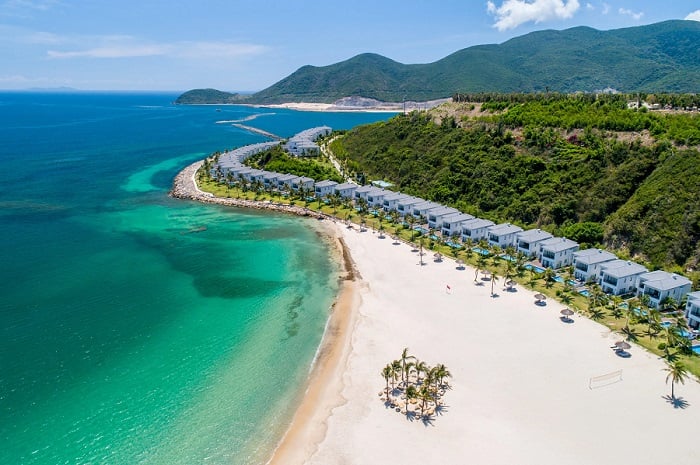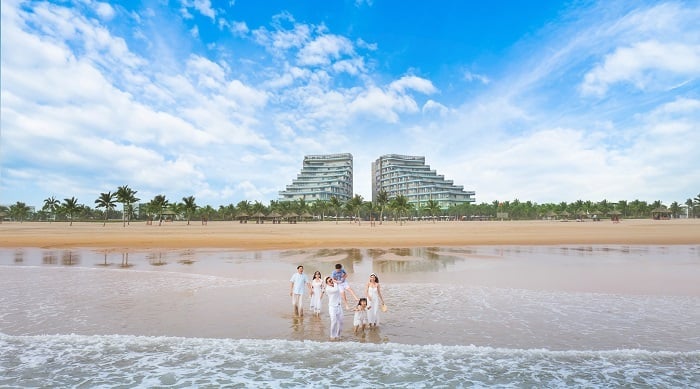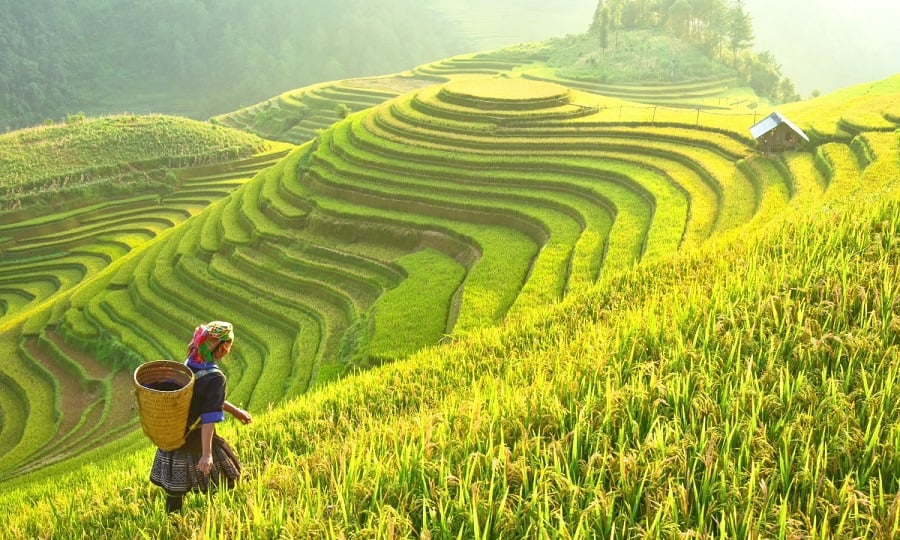
North and South Vietnam, two distinct regions separated by a tumultuous history, offer travelers a captivating journey into the heart of this country. Exploring both Northern Vietnam and South Vietnam provides an opportunity to delve deeper into the rich tapestry of the country, uncovering fascinating insights that can enhance your Vietnam travel.
1. The weather of North and South Vietnam
North and South Vietnam have different weather patterns due to their diverse geographical locations. The North experiences four seasons with cold winters and hot summers, while the South remains relatively warm all year round with two distinct seasons, namely the dry season and the rainy season.
During winter in the North, temperatures can plummet down to 10°C, even causing snowfall in some mountainous areas. Summers are hot, with temperatures up to 40°C in cities like Hanoi.
In contrast, Southern Vietnam's climate zones consist of tropical areas, being humid all year round with an average temperature of around 27°C. The rainy season lasts from May to November, with heavy rains during July and August.
Despite these differences, both North and South Vietnam weather show characteristics of a tropical climate.

2. North and South Vietnam differences in terms of culture
2.1. North vs. South Vietnamese people
North Vietnamese people tend to have a more reserved and disciplined personality. They value collective effort over individual achievement and place great emphasis on education and hard work.
On the other hand, South Vietnamese people often exhibit a more outgoing and entrepreneurial personality. They are known for their hospitality, love of food and drink, and willingness to take risks in pursuit of success.
However, both groups share a deep pride in their country and heritage, as well as a reverence for family values. Despite the stark differences between North and South Vietnamese personalities, there is a sense of unity that transcends geographic boundaries – a common bond forged through centuries of shared history and the struggle for national independence.

2.2. North vs. South Vietnamese language and accent
When it comes to the Vietnamese language and accent, there are clear differences between the Northern and Southern regions. In the North, the accent is typically more clipped and nasal, with a slower pace. The vocabulary tends to lean towards formal and literary language due to Hanoi's role as Vietnam's cultural and political center.
On the other hand, Southern Vietnamese tend to speak faster, with a noticeable rise and fall in tone. The accent is often less precise, with frequently omitted sounds or syllables at the end of words, making it difficult for outsiders to understand at times. Additionally, Southerners mix more English loan words into their daily conversations than their Northern counterparts do.

2.3. North vs. South Vietnamese etiquettes and routines
North and South Vietnam have distinct etiquettes and routines that reflect their regional differences, although they share common values such as respect for elders.
In the North, people tend to be more reserved and formal, with strict adherence to social hierarchies. They prefer more subtle expressions of emotions and avoid overt displays of affection or emotion in public.
On the other hand, Southerners are known for their gregariousness, humor, and relaxed demeanor. They value group harmony and prioritize interpersonal relationships over formalities. Therefore, greetings are more extensive and can involve physical contact.
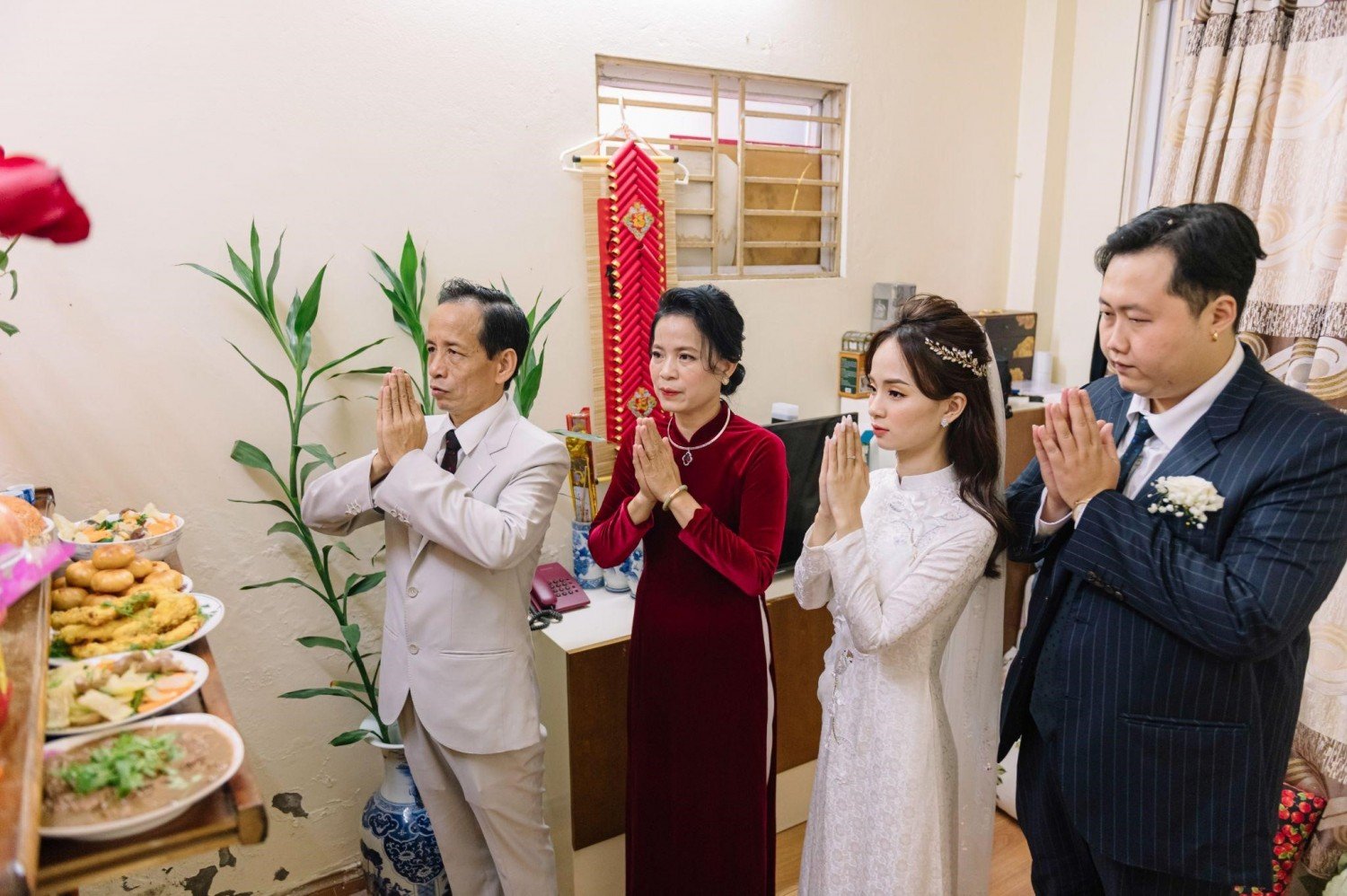
2.4. North vs. South Vietnamese cuisine
The cuisine in the North tends to be lighter, with less use of herbs and spices compared to the South, which is known for bold flavors and liberal use of garlic, chili, and fish sauce. While each region has its unique take on Vietnamese food, both offer iconic tastes that will keep your taste buds stimulated throughout your travels.
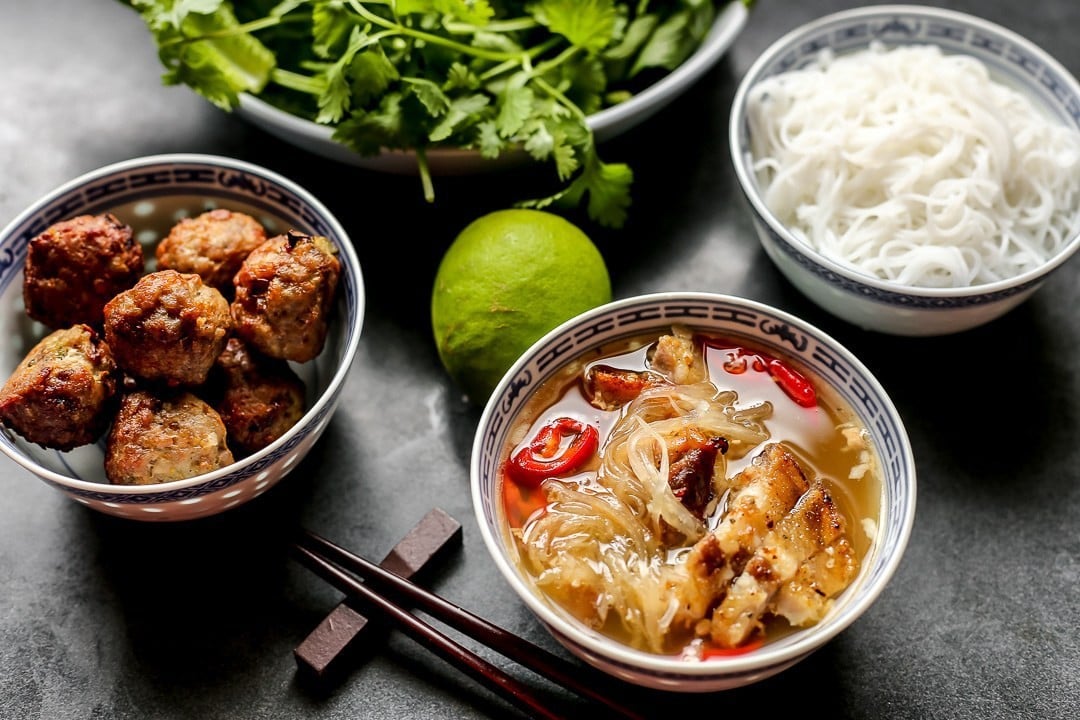
3. The best North to South Vietnam itinerary for your trip
To get a good grasp of North and South Vietnam, consider adding the following destinations to your Vietnam itinerary.
3.1. Sapa
Sapa is a charming destination located in the northwestern region of Vietnam, famous for its scenic mountainous landscapes and rich cultural diversity. This town is home to several ethnic groups, including the H’mong, Giay, and Tay people.
You can immerse yourself in their unique culture by joining a trekking tour to explore stunning rice terraces and quaint villages nestled amidst towering mountains that dot the surrounding countryside. Sapa also offers opportunities for adventure enthusiasts, with activities such as hiking, biking, and rock climbing available.
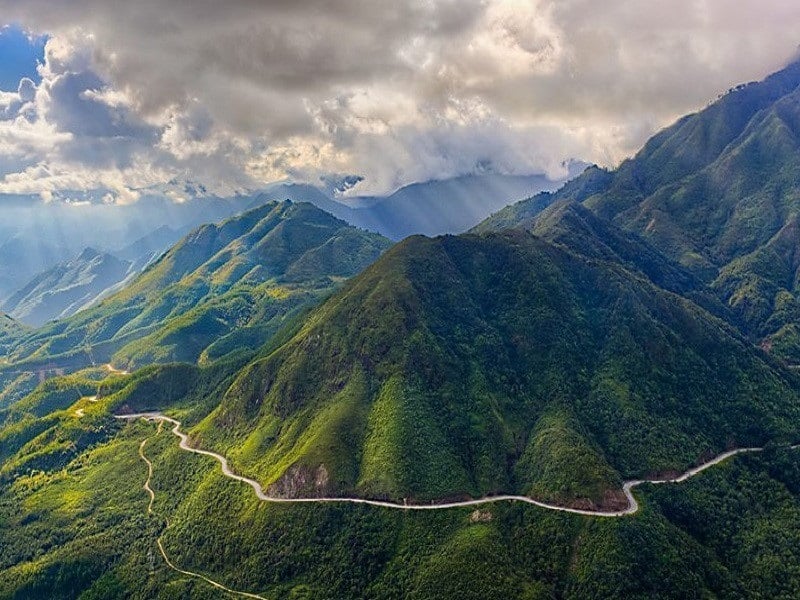
3.2. Hanoi
Hanoi is the charming capital city of Vietnam, with a rich cultural heritage and a unique fusion of Eastern and Western influences. Known for its vibrant street life, fragrant food stalls, motorbike-filled streets, and breathtaking ancient architecture, Hanoi travel offers tourists an unforgettable experience.
Exploring the winding streets of the Old Quarter, visitors will find hidden alleyways filled with shops selling everything, from traditional handicrafts to modern fashion. Hanoi is also home to distinctive museums that offer glimpses into Vietnam’s history, culture, and art. For those fond of nature and culture, strolling around the serene Hoan Kiem Lake or visiting the Temple of Literature can bring a sense of inner peace in this bustling city.
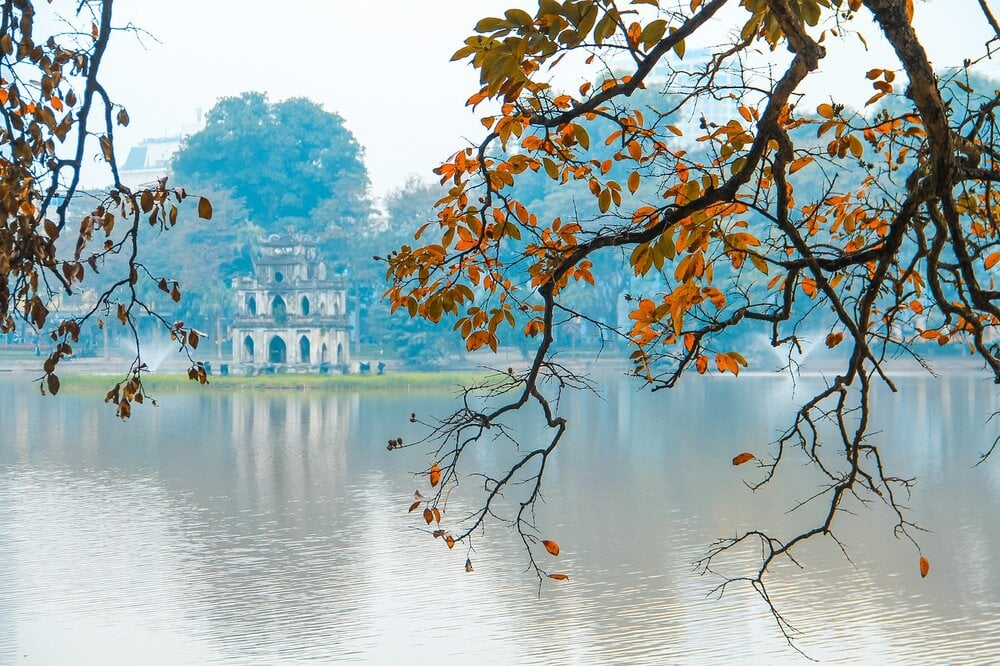
3.3. Ha Long Bay
Ha Long Bay is a stunning natural wonder located in Vietnam. Known for its thousands of limestone karsts and isles towering from the turquoise waters, this UNESCO World Heritage Site is a breathtaking sight to behold.
Visitors can take a traditional wooden junk boat to explore the bay and its hidden caves, grottos, and beaches. In addition to the stunning scenery, Ha Long Bay also offers an insightful glimpse into Vietnamese culture, with floating fishing villages that have been inhabited for generations.
For the adventurous, there are opportunities for kayaking or rock climbing amidst the impressive karst formations. Those who prefer to simply luxuriate on a cruise deck and soak up the views will not be disappointed by one of Asia's most striking coastal destinations!
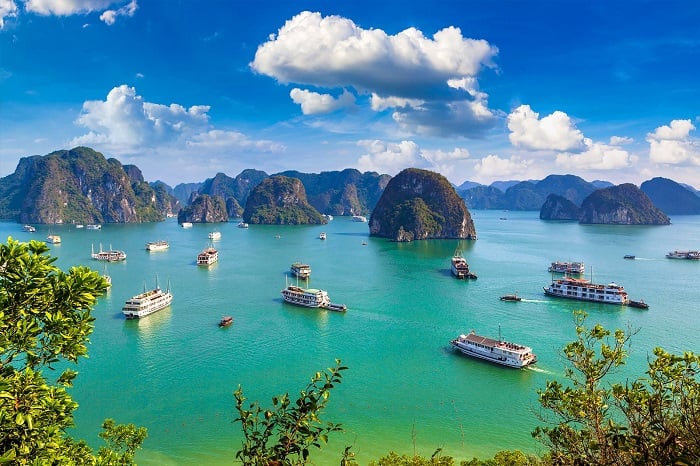
3.4. Ninh Binh
Ninh Binh is a small province located in the northern region of Vietnam, often referred to as "Ha Long Bay on land" due to its stunning natural beauty. This province boasts an array of limestone cliffs, caves, and rice paddies, creating picturesque landscapes that appeal to visitors from all over the globe.
The most prominent attractions in Ninh Binh include Trang An, Tam Coc - Bich Dong, and Cuc Phuong National Park. Visitors can take a leisurely boat ride through the waterways of Trang An while enjoying the stunning scenery, or cycle through the rice fields in Tam Coc.
Furthermore, nature lovers can hike through the jungle trails in Cuc Phuong National Park, spotting endangered species along the way. Ninh Binh is a must-visit for travelers seeking scenic beauty combined with adventure in Northern Vietnam.

3.5. Hue
Hue is a charming city in the central region of Vietnam, boasting an incredible variety of cultural and historical attractions. This city is best known for its UNESCO World Heritage Site - the Imperial Citadel, which served as the residence of the Nguyen Dynasty’s emperors from 1805 to 1945.
Hue also features several royal tombs, grand pagodas, and stunning natural landscapes such as the Perfume River and Tam Giang Lagoon. Visitors can immerse themselves in Hue's rich history by exploring its museums and galleries like the Hue Museum of Royal Antiquities. Foodies will also love trying out delicious local specialties like bun bo Hue or banh khoai.
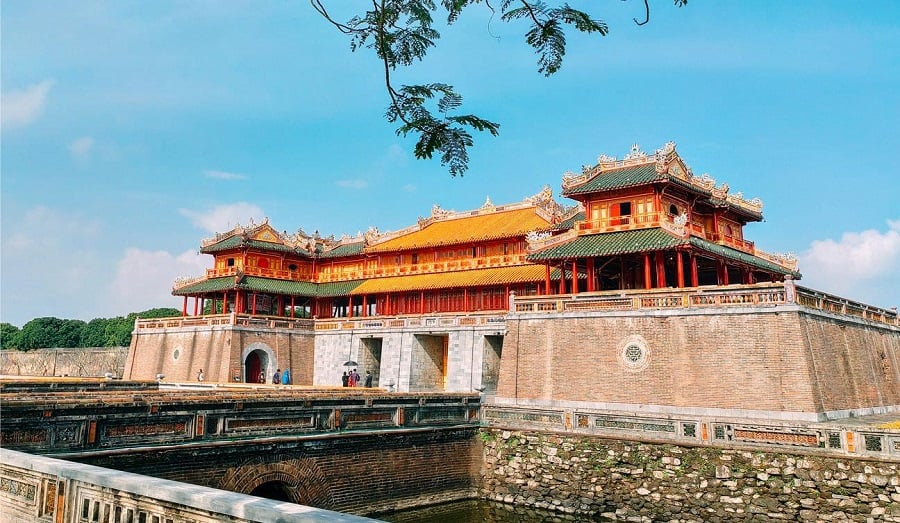
3.6. Hoi An
Hoi An, a picturesque ancient town in Central Vietnam, is a hidden gem that is best known for its well-preserved architecture and cultural heritage, with influences from Chinese, Japanese, and European cultures. Visitors can stroll down the narrow streets lined with yellow buildings adorned with colorful lanterns, explore temples, shrines, pagodas, and museums, or simply enjoy a cup of Vietnamese coffee at a riverside cafe.
Despite being a popular tourist destination, Hoi An still manages to maintain its laid-back ambiance through strict laws that protect its historical sites from modern development. Whether you are interested in history or simply want to relax in idyllic surroundings, this delightful little town promises all this and more!
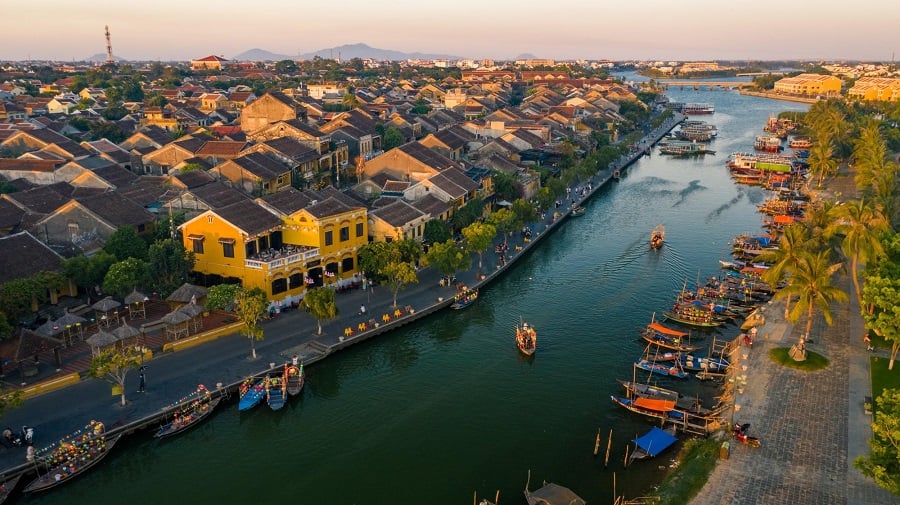
3.7. Da Nang
Da Nang is a coastal city in Vietnam that offers an abundance of things to see and do. The most famous attraction here is probably the Marble Mountains, which are five limestone peaks that offer beautiful views of the surrounding area.
The city's most famous beach, My Khe, is also very popular among tourists and locals alike. For history buffs, there are several museums and historical sites to visit, such as the Cham Museum. Moreover, with its central location, Da Nang serves as a convenient starting point for those looking to explore other parts of Vietnam.
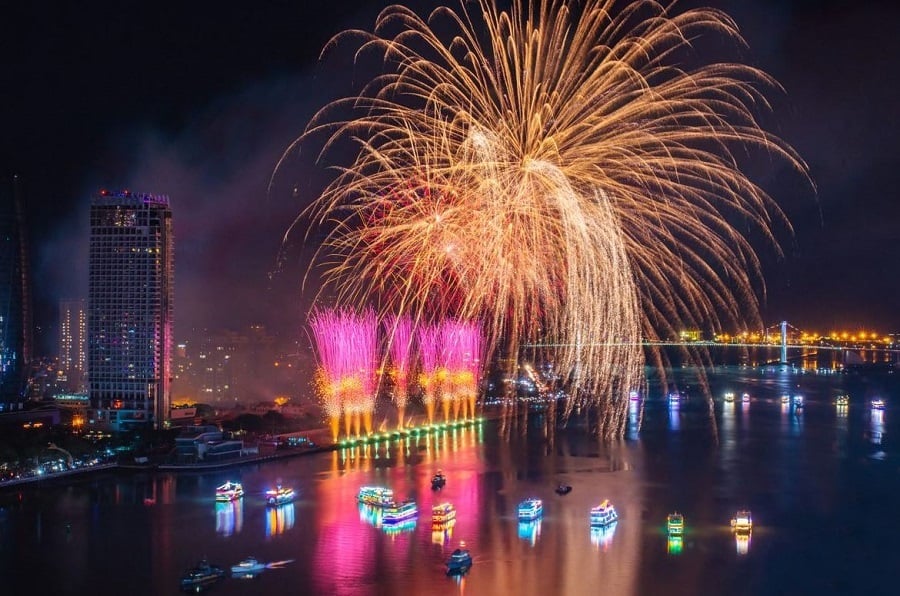
3.8. Nha Trang
Nha Trang is a coastal city located in the central region of Vietnam. It is known for its clear turquoise waters and sandy shores, making it an ideal destination for beach enthusiasts.
One of the city's most popular attractions is VinWonders Nha Trang, a large amusement park of records. The city also boasts several historical landmarks, such as the Ponagar Cham Towers built between the 8th and 13th centuries.
Foodies will enjoy exploring the local cuisine filled with fresh seafood dishes, banh mi, and Vietnamese coffee served with condensed milk. Overall, Nha Trang offers a perfect blend of relaxation, adventure, and culture that can cater to all types of travelers.
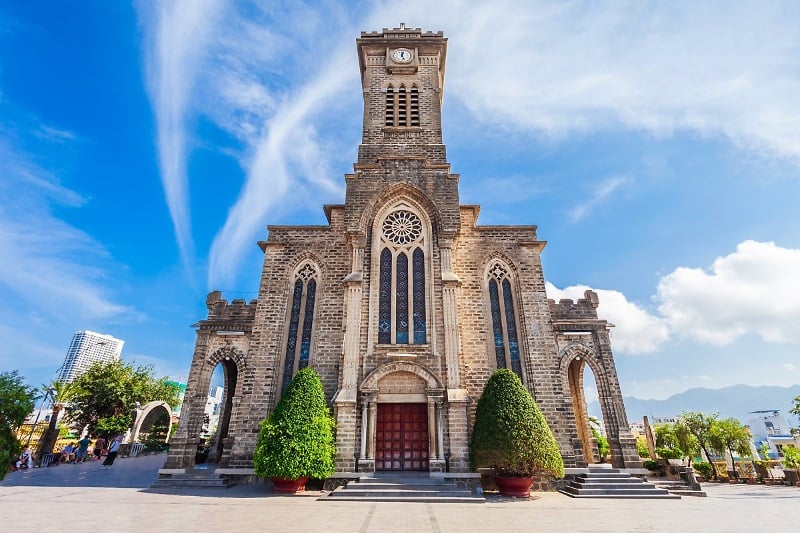
3.9. Ho Chi Minh City
Ho Chi Minh City, formerly known as Saigon, is the largest city in Vietnam. This city boasts a mix of modern skyscrapers and historical landmarks such as Notre-Dame Cathedral and the War Remnants Museum.
A stroll through District 1 will take you through lovely parks, bustling markets, and stunning colonial architectural works. For a taste of the local life, head to the vibrant Ben Thanh Market, where you can find everything, from street food to souvenirs for family and friends back home.
Despite its bustling atmosphere, Ho Chi Minh City is also dotted with peaceful temples such as Jade Emperor Pagoda, which offers an oasis away from the lively streets outside. With so much to see and experience, Ho Chi Minh City is truly a must-visit destination in Vietnam.
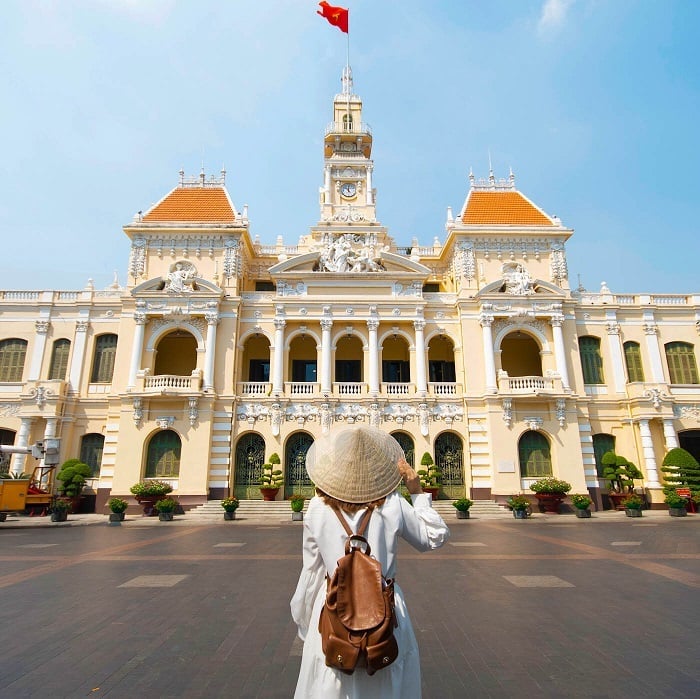
3.10. The Mekong Delta
The Mekong Delta in Southern Vietnam is a stunningly picturesque region of interlacing rivers, canals, and lush green rice paddies. This region is effortlessly tranquil and vast, providing a captivating backdrop for visitors to experience Vietnamese culture.
Visitors can indulge in floating markets and witness the timeless lifestyle of the local fishermen, whose livelihoods depend on the abundant freshwater resources here. From rice fields stretching as far as the eye can see to the intricate canal systems navigated by traditional wooden boats, this wonderland is an unparalleled destination that should be at the top of any travel bucket list.
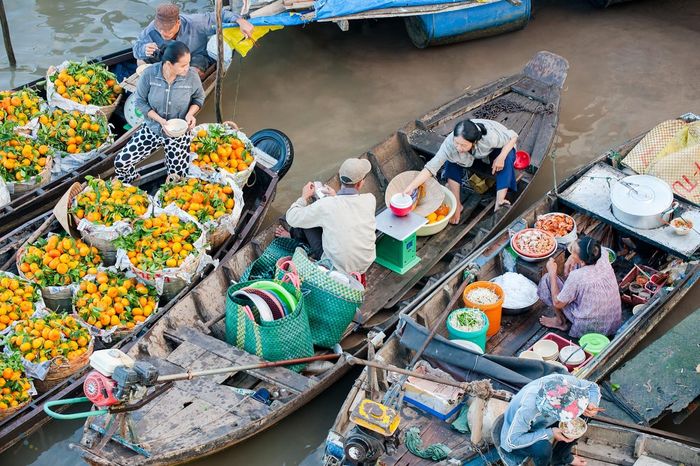
3.11. Phu Quoc
Phu Quoc is a breathtaking tropical paradise that attracts visitors with clear waters and lush forests. As the largest island in Vietnam, it offers endless opportunities for exploration and adventure.
Phu Quoc is dotted with small fishing villages, where travelers can sample fresh seafood dishes and learn about the local culture. And to fully experience the beauty of Phu Quoc, visitors can take a boat trip to some surrounding islands, including Hon Thom, which boast panoramic views of the sea from the cable car.
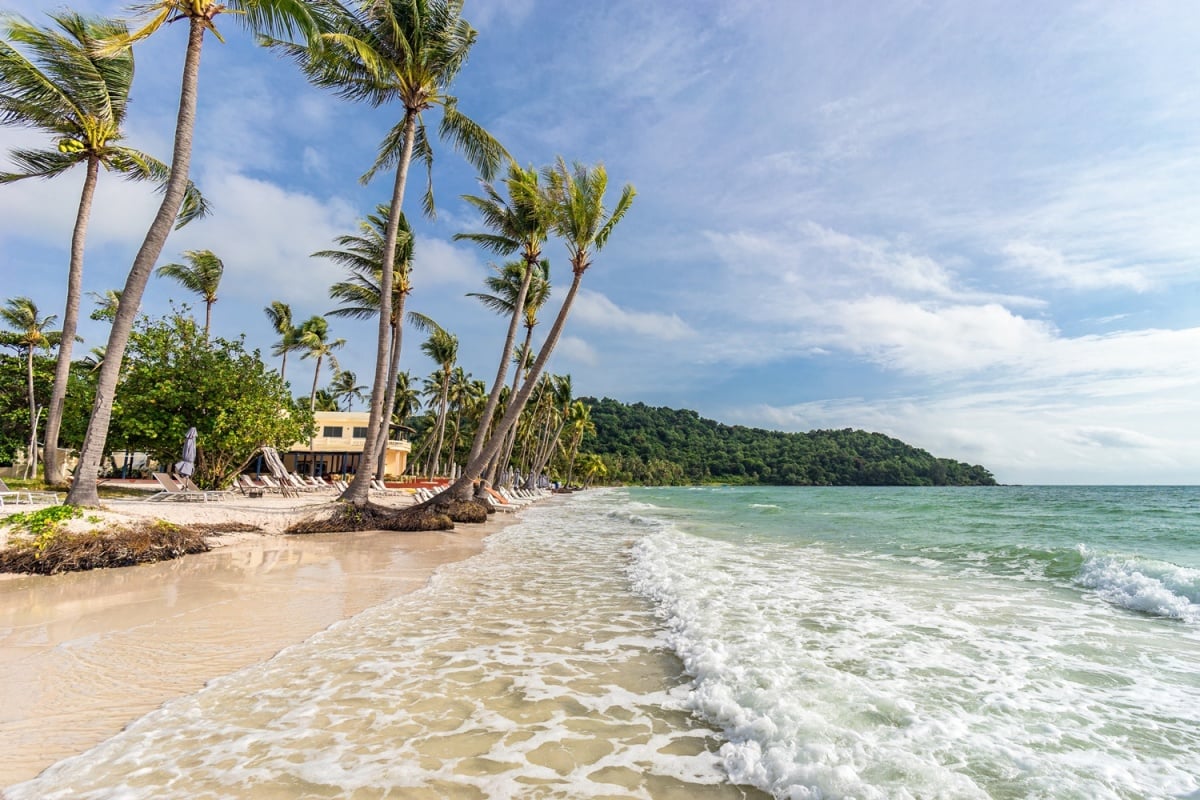
>>> Read more: Best time to visit Vietnam: Know when to start your upcoming trip
For a truly good time at all the Vietnamese destinations above, consider staying at Vinpearl’s resorts and hotels. Vinpearl offers a one-of-a-kind stay with unparalleled amenities, including private beaches, world-class spas, fitness centers, and fine dining restaurants. Whether you are seeking the ultimate relaxation or an adventure-filled excursion, Vinpearl will make sure your every need is met with personalized attention throughout your stay.
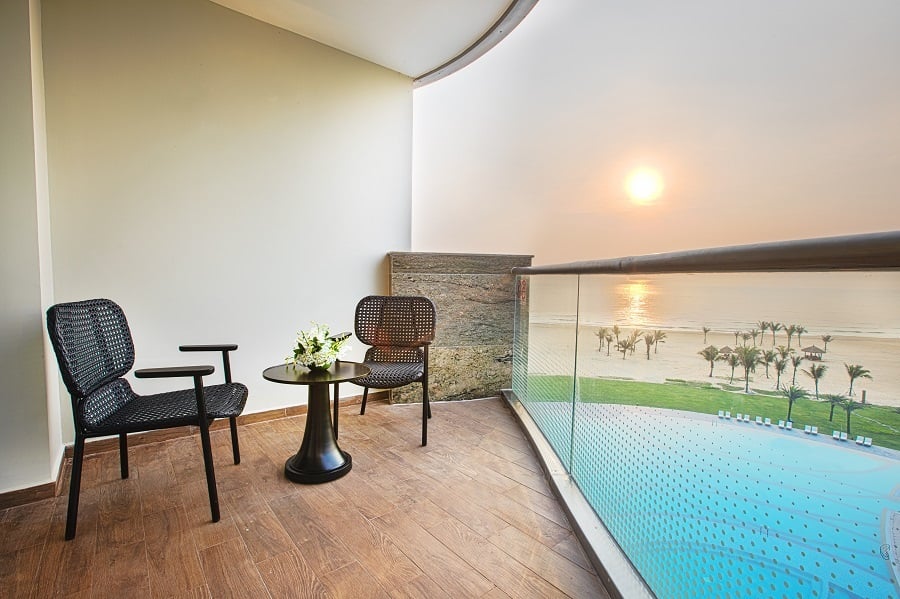
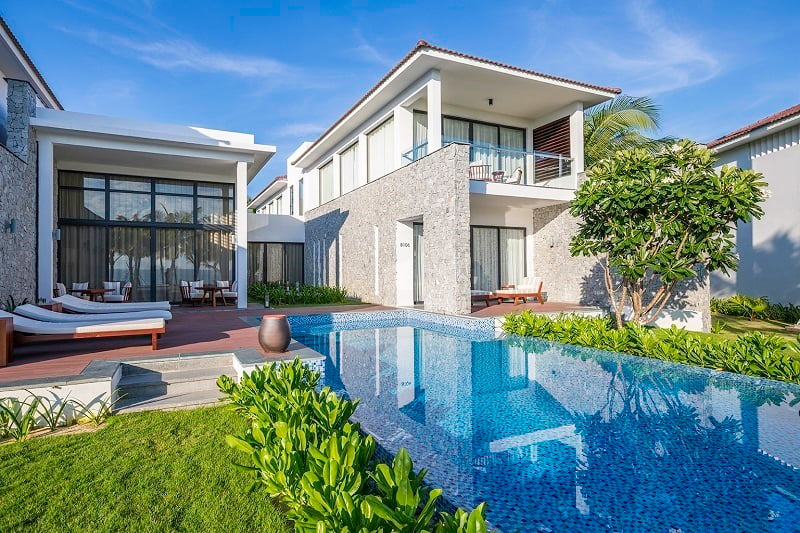
>>> Book rooms in Vinpearl Phu Quoc, Vinpearl Nha Trang, Vinpearl Resort & Golf Nam Hoi An, Vinpearl Resort & Spa Ha Long to ensure a pleasant stay at each of these stunning destinations!
Exploring the destinations of North and South Vietnam offers travelers an enriching experience that delves into the rich tapestry of the country's history, culture, and natural beauty. From the historic landmarks and vibrant cities of the North to the stunning landscapes and coastal charm of the South, each region presents its own distinct allure.
>>> Book rooms in Vinpearl Phu Quoc, Vinpearl Nha Trang, Vinpearl Resort & Golf Nam Hoi An, Vinpearl Resort & Spa Ha Long to enjoy a fulfilling vacation in various Vietnamese destinations!


